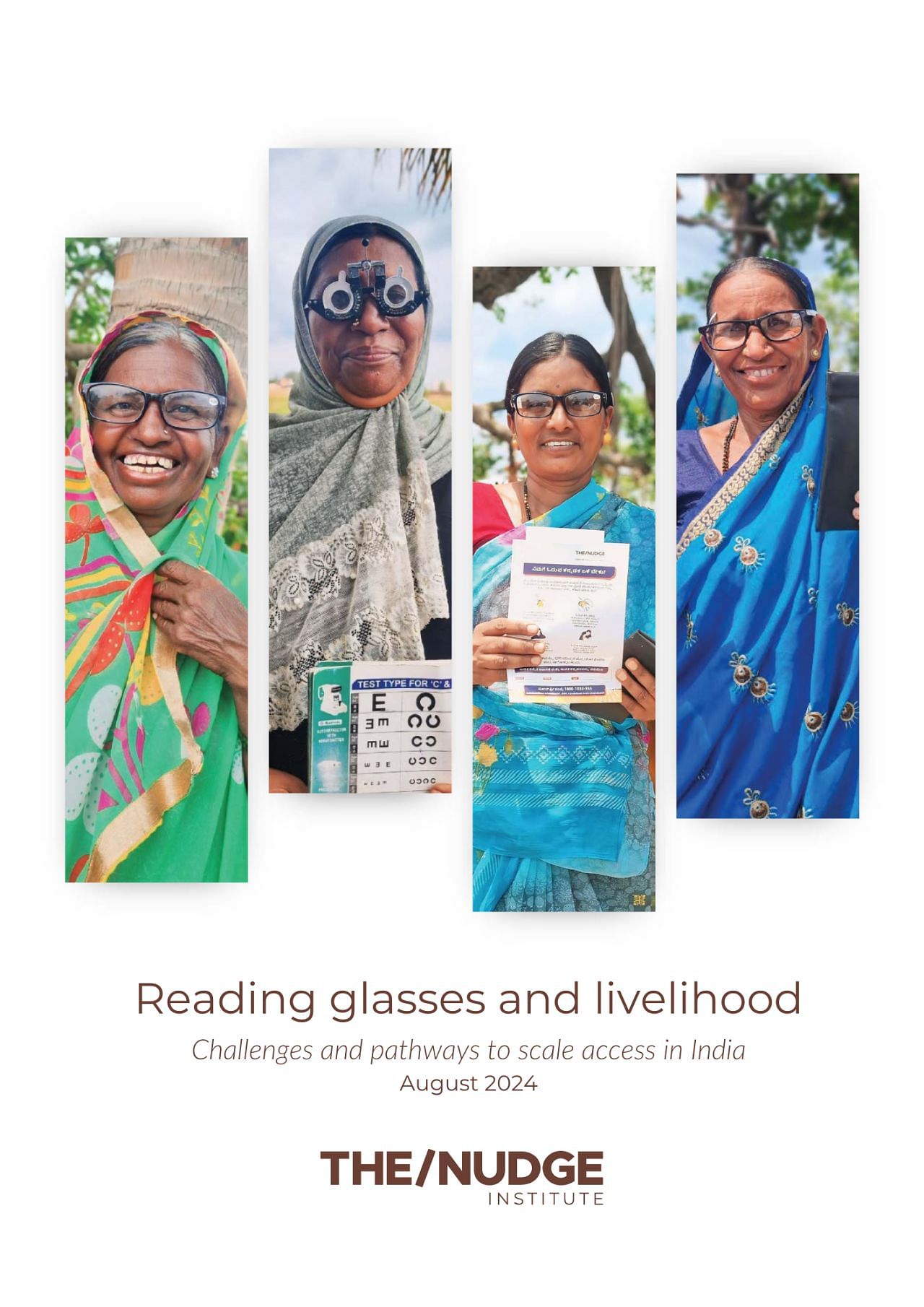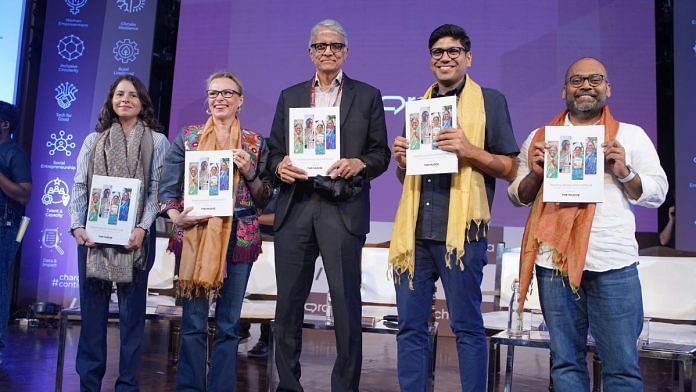India’s aspirations to become a $30 trillion economy and a developed nation by 2047 are anchored in a compounded GDP growth mandate of 8%. Realising our growth ambition is deeply dependent on enhancing the productivity of our workforce. According to estimates, the productivity of 40% of India’s 600 million-strong workforce is significantly impacted by uncorrected presbyopia – a decline in near vision post the age of 35. While such pervasive challenges might seem to demand long-term policy shifts or advanced infrastructure, counterintuitively, the solution is a surprisingly simple and centuries-old innovation – “Reading Glasses.”
In its report, “Reading Glasses and Livelihood: challenges and pathways to scale access in India“, The/Nudge Institute delves deep into the challenge of uncorrected presbyopia, highlighting its scale and the potential impact of a simple pair of reading glasses. Enabling access to reading glasses isn’t just about health; it can drive productivity by upwards of 34% and boost income by 20%, as demonstrated by multiple studies and Randomised Control Trials hosted globally. By addressing uncorrected presbyopia with affordable reading glasses, we have the opportunity to enhance India’s GDP by $16 billion through a modest investment of $600 million. That’s a 27-fold return that can uplift millions of lives and propel our nation towards its path to Viksit Bharat. The report emphasises that a quality pair of reading glasses can be produced for just $1 through robust policy and efficient distribution models, these glasses can also reach a person in the most remote parts of the country at a cost as low as $3, including the cost of screening and administration.
Despite the simplicity of the solution, several chokepoints hinder access to reading glasses, especially among marginalised communities:
- Lack of awareness: Over 85% of those struggling with uncorrected presbyopia reside in rural areas where understanding of the need for vision correction and its potential to enhance productivity is minimal. Many need to be made aware that their vision challenges are curable.
- Misconceptions and stigmas: Common misconceptions prevail, such as the belief that wearing reading glasses will worsen eyesight or that over-the-counter (OTC) reading glasses can harm the eyes. Cultural stigmas also play a role, with glasses sometimes viewed as a Western practice, leading to resistance until vision problems become severe.
Economic and distribution challenges: The perception that eye care and reading glasses are expensive deters many from seeking necessary vision correction. For rural residents, acquiring glasses often necessitates a costly and arduous journey to urban centres, forfeiting a day’s wages and incurring extra travel expenses. Additionally, India faces a significant shortage of optometrists, with only one available for every 180,000 people, compared to one per 10,000 or fewer in developed countries, making vision screening challenging.

Envisioning the Roadmap for the Future
The/Nudge Institute outlines a comprehensive plan to make India presbyopia-free over the next decade, emphasising that coordinated action is essential to overcome the multi-layered socio-economic and distribution challenges.
1. Committing towards Collaborative Action
The challenge of uncorrected presbyopia has not been devoid of action. Multiple state governments, supported by central ministries, have been driving eye care access through various initiatives. Nonprofits have also been active, though solutions have yet to achieve population scale. It requires a concerted effort, with the government enabling budgetary allocations and civil society and markets coming together to drive access and adoption. Collaborative action can amplify impact, ensuring resources are utilised efficiently and effectively.
2. Strengthening delivery through Technology
Considering that more than 85% of the population struggling with uncorrected presbyopia lives in villages, building an effective delivery model is quintessential. The recent successful administration of COVID-19 vaccines showcased India’s capacity for colossal effective delivery. Addressing uncorrected presbyopia has a similar need for infrastructure, technology, and mobilizing community cadres to drive change. Leveraging technology can help bridge the gap caused by the shortage of optometrists—training community health workers to conduct basic vision screenings and utilizing mobile clinics can bring eye care directly to those in need. Global experiences suggest that most individuals are willing to allocate approximately 10% of their monthly income towards eyeglasses, highlighting the need for affordable pricing—ideally around $2.50 per pair for economically disadvantaged people.
3. Building awareness through Effective Campaigns
Reading glasses are not on the Drug Controller General of India’s list of items needing a prescription, yet awareness on de-medicalization hasn’t witnessed mass appeal. Socio-cultural stigmas, especially those entrenched in gender biases, still hinder large-scale adoption. A national drive aided by localized awareness campaigns is imperative to fight the stigma, dispel myths, and spotlight change stories. Engaging local influencers, educators, and community leaders can help shift perceptions and encourage adoption.
Also read: Indian drivers are experiencing a ‘myopia epidemic’ — large numbers just can’t see properly
The Economic Imperative
Enabling access to affordable reading glasses not only improves the quality of life but also has the potential to increase earnings for millions, whilst also enhancing workforce productivity, and stimulating economic value creation of more than $16 billion. Hence, making it a win-win situation that benefits individuals, communities, and the nation as a whole.
The pathway to making India presbyopia-free exists, though involves tackling multi-layered challenges at various levels. This calls for collaborative action- across government bodies, civil society, philanthropic organisations, and the private sector to enable access to reading glasses for all to be a priority. It’s time to make clear vision accessible and ensure that no one is left behind due to something as seemingly simple as a lack of affordable glasses.
Amit Gupta is the COO, The/Nudge Institute. Views are personal. ThePrint is a media partner for charcha, organised by The/Nudge Institute.






